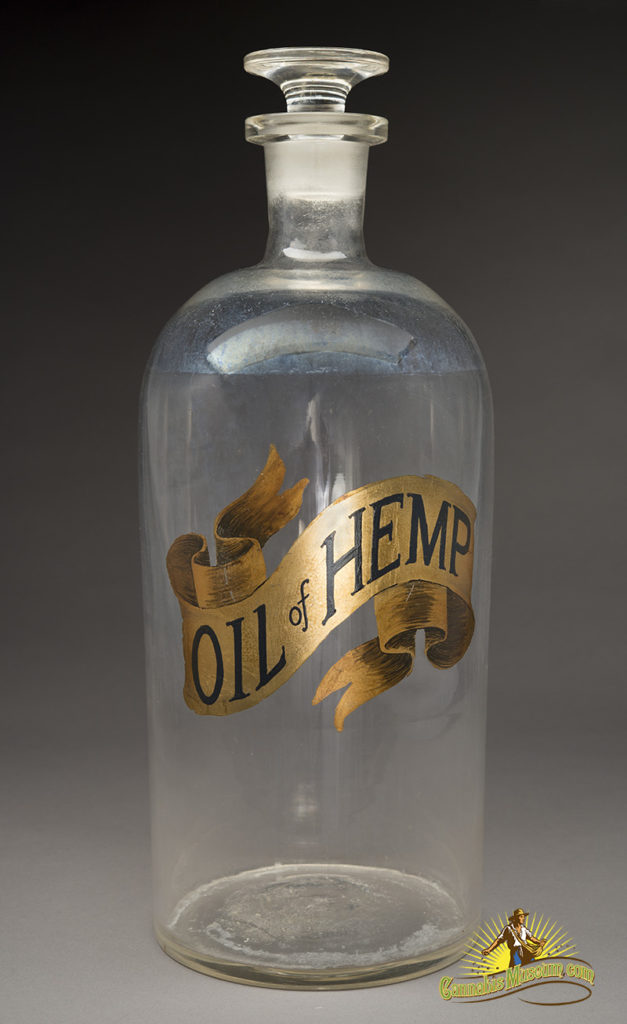
Glass production technology progressed quickly in the 1800s. Coal-fired furnaces and improved metallurgy made possible line production of 5 gallon carboys like this. Notice the taper in this bottle. This is indicative of the use of a one-piece mold. The glass was blown into a tapered cylinder that would define its shape. As the glass cooled, the taper allowed the glass to pop free from the mold. This tight-fitting ground glass lid was another innovation. Also notice the incredible care put into the label on this jar with gold leaf and asphaltum paint. It might have taken a week for some apprentice to decorate with this masterpiece! This was clearly a display jar, not intended for dispensing products.
Hemp oil, or hemp seed oil, is pressed from seeds of cannabis. Cold-pressed, unrefined hemp oil is light to dark green in color. Hemp seed oil was in common use in the human diet and as an animal feed. It has a pleasant, nutty flavor. Hemp oil is a lipid, not to be confused with resinous extracts from the flowers and leaves of mature plants sometimes being hawked as “hemp oil” today.
Hemp’s nutritious seed oil is highly unsaturated and has an ideal 3:1 ratio of omega-6 to omega-3 essential fatty acids. Refined hemp seed oil was used in body care products, soaps, shampoos, liniments, detergents, paints and varnishes.
